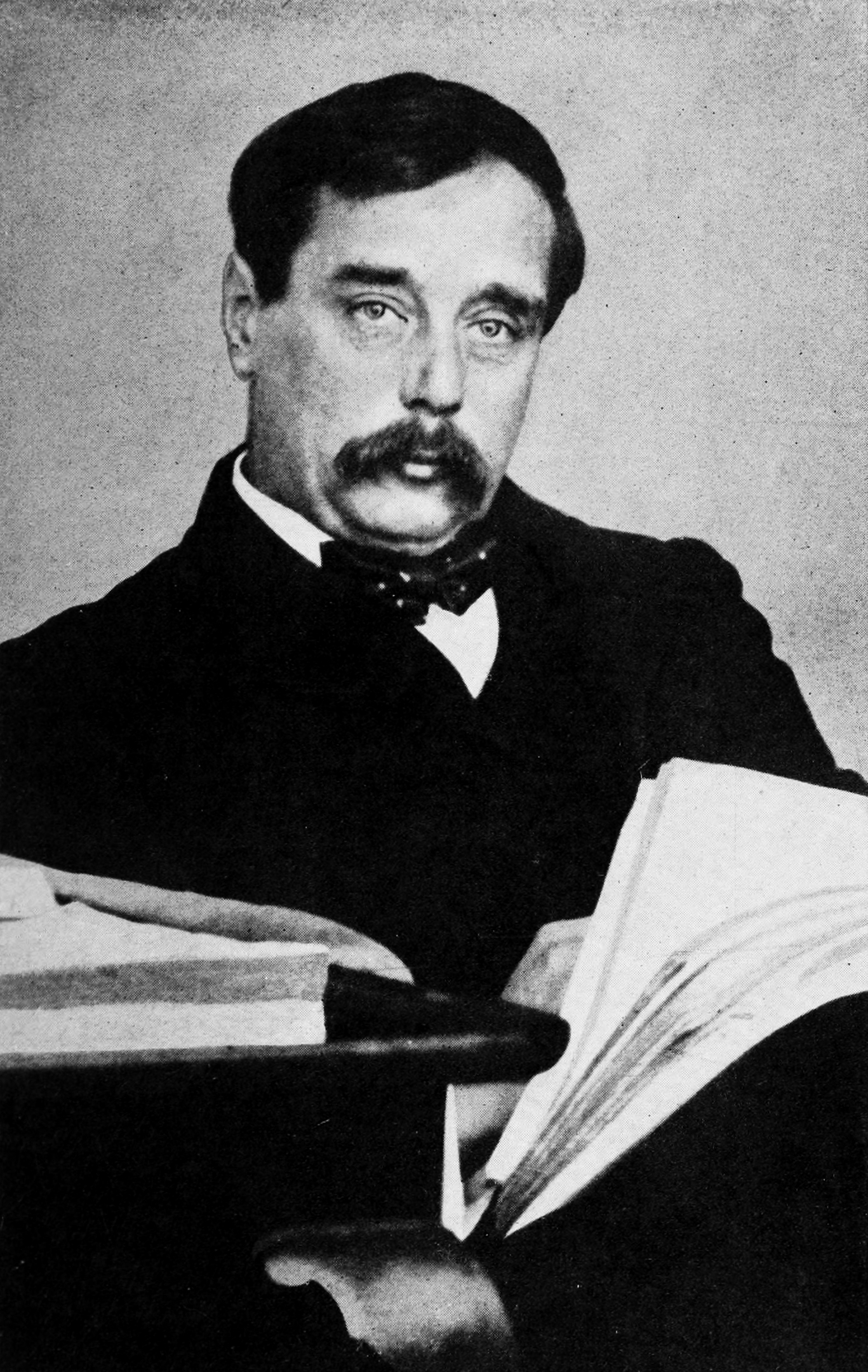“The Thumb Mark” is a short story by the English author H. G. Wells (1866–1946) first published in The Pall Mall BudgetWeekly magazine published in London from 1868 until 1920. on 28 June 1894.[1] Told by one of a class of chemistry students, the story concerns an anarchist who sets fire to a house but leaves a clue to his identity in the form of a thumb print.
Synopsis
The story begins as three students, who have arrived in class early, are looking out of their laboratory window at the remains of a house opposite, which has been gutted by fire. A fourth student bursts in with the news that the house belonged to the famous policeman Inspector Bulstrode, and that an anarchist is responsible for the attack. Meanwhile their instructor, Somerset Smith, is late for class, and the the newly entered student says that he has seen him talking to one of the policemen investigating the cause of the fire.
Looking through the window again, they see Smith leaving the property carrying a box labelled “Hudson’s Soap”, containing some blackened rubbish among which is a broken glass jar. They then hear Smith ascending the stairs to his preparation room next to the laboratory, and in due course Smith presents himself before his class. After checking that everyone is present, he reveals his suspicion that the materials used to start the fire – phosphorous dissolved in carbon bisulphide – came from the laboratory in which they are sitting. He goes on to say that at about ten o’clock the previous night he noticed that the stores in his preparation room had been tampered with, both materials had been removed, and that he had been raking about among the wreckage of the burned house that morning to try and find the bottle of carbon disulphide.
Smith reveals to his class that he found the bottle in the garden of the house, and although smashed, its large paper label has held part of it together. He further reveals that whoever stole the bottle had also upset a bottle of starch mucilage, which turns blue when exposed to iodine. Suspecting that the thief may have got the starch mucilage on his hands, Smith has applied a weak solution of iodine to the label, and discovered three fingerprints and a thumbprint. He offers each of his students a little slip of paper and some printers’ ink, and asks them to provide their own fingerprints for comparison. At that, the guilty student begins throwing bottles of acid around the laboratory, forcing everyone else out of the room.
Smith and the other students fight back by throwing a large jar of sulphuretted hydrogen[a]Archaic term for hydrogen sulphide, an exceedingly poisonous gas with the smell of rotten eggs.[2] into the laboratory, followed by a carboy[b]Large globular bottle with a narrow neck.[3] of hydrochloric acid and ammonium sulphide; they hear coughing from behind the door, and calls for mercy. After three minutes of silence they venture into the laboratory, only to discover that the anarchist student has escaped via the window.
At the beginning of his lecture the following morning, Smith bemoans the fact that the anarchist did not do the logical thing and give himself up, instead throwing bottles of acid around. “Most unfair of him. This kind of thing robs detective work of all its intellectual charms.”
Commentary
The only anarchist-inspired attack in Britain occurred on 15 February 1894, just a few months before the publication of “The Thumb Mark”, when the French anarchist Martial Bourdin was killed outside the Greenwich Observatory by the premature detonation of the explosives he was carrying. British anarchists during the 1880s and ’90s were not really a comparable threat to their French contemporaries, as their chosen medium of expression was “printed propaganda”.[4] Writing about another of Wells’s stories featuring an anarchist, “The Stolen BacillusShort story by H. G. Wells first published in 1894, about an anarchist who steals what he believes to be a tube of cholera bacteria to poison London's water supply, but which is in reality harmless.“, the academic and author Deaglán Ó Donghaile has suggested that “parodies of radicalism “were common during the late Victorian and Edwardian periods, and … Wells pandered to the popular construction of Anarchism as morbid irrationality.”[4]
The psychologist and statistician Francis Galton published a detailed statistical model of fingerprint analysis and identification in his 1892 book Finger Prints, but Scotland Yard did not begin to use the technique to identify criminals until 1901. The following year Harry Jackson was found guilty of burglary on the basis of a thumbprint he had left on the windowsill of a burgled house, the first time a fingerprint had helped to convict a criminal in a British court.[5]
See also
- H. G. Wells bibliographyList of publications written by H. G. Wells during the more than fifty years of his literary career.

